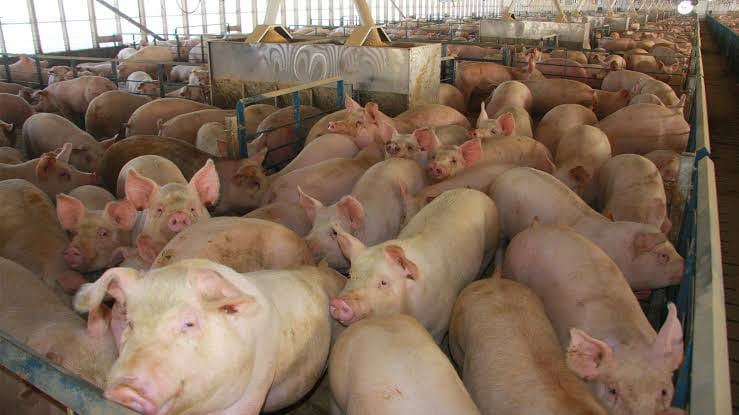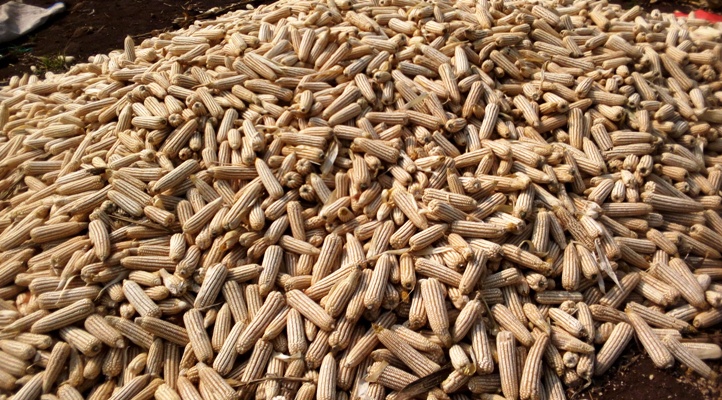By Christopher Mulindwa
Last week we discussed in detail the information you need to read and understand about the 4 key components (Genetics, Feeds, Management and Market) of a successful pig farm.
Let me sum this up with housing and the ability to create a stable production system on farm.
Housing is very important because it shields the pigs from extreme weather conditions.
Naturally pigs have no sweat glands so as a matter of fact, they don’t sweat.
Pigs can easily die of heat stress! Very cold weather is not good either; Chilling is one of the major causes of piglet deaths in small and medium holder farms in Uganda.
ALSO READ:
GUIDE: What To Consider When Starting UP A Commercial Pig Farming Business (PART 1)
For mature pigs, the pig will eat but most energy will instead be used for body temperature control so less will go to weight development.
PIG HOUSING
1. Floor
There are more than one pig house floor types for you to choose from. There has been a huge campaign recently by Non Government Organizations, Kampala Capital City Authority, some private companies and research institutions encouraging the use of bio floors commonly known as the Indigenous Micro –organisms (IMO – System).
This falls under the deep litter system of animal housing commonly used by poultry farmers but unlike the deep litter system, litter in IMO system is mixed with bacteria and addition of litter is not continuous. This is because; the bacteria added breaks down fecal matter into smaller particles so can easily mix with litter making it usable for a longer period of time.
You need to gather as much information as you can about this system, I will expound on it and as well give personal opinion when discussing pig housing later in my weekly publications. Other floor types for you to read about include concrete/concrete slates, Plastic slates, wooden slates and metal slates.
2. Wall
The choice of the wall to be used must depend on available resources and decision on whether to invest in temporary or permanent walls.
I hear some folks say, “a wooden wall is old school”! Who told you that? A well constructed wooden wall is very fine for the pigs. If the money available is not enough for you to construct brick walls, wood is an option which is abundantly available and sold affordably. It is even better to watch your pig business grow from temporary to permanent structures constructed from profits generated by the business it’s self.
However, you must be careful when designing walls for both farrowing and weaner houses. Incorrect walls may lead to increased piglet mortality.
Therefore gather as much information as you can about this as well.
3. Roof
Temporary roofs can be very disturbing and I don’t want to encourage them. However they are an affordable option for many smallholder farmers who are struggling to upgrade their pigs from scavenging to indoors. Find more information but I will as well be discussing this in detail when handling housing.
- Drainage and waste management
This is a very important aspect and must interest you during your research.
Your farm can easily become a nuisance when drainage and waste management is not properly managed. At this level, disease outbreaks is inevitable!
Biogas systems are a good consideration and given the fact that there are many projects on climatic change and the use of green energy, acquiring one at a cheaper price is very easy. Most importantly, read about the different ways how your farm manure and other waste can economically benefit you.
5. Niche markets
This focuses on free range and organically produced pork market.
In presence of adequate land free range pig farming may be a good option today or in the future.
This is because as the sector industrializes unique and sensitive markets demanding specialized products emerges. This can be out of fear of consuming meat produced from industry farms due to some reasons related to, the cruelty to animals, excessive use of drugs, genetic modifications etc.
Today, the Uganda pork market is receiving an insignificant amount of pork from industry farms but already some consumers are complaining about the taste!
They say traditionally raised pigs taste better! Anyway, I also carry a terrible mindset about industrially raised chicken, to me traditionally raised chicken taste better.
Therefore, I have to spend more to acquire what meets my taste. Organic pork follow a similar path though more specialized; you will need certification from responsible bodies for your pork products to qualify as organic.
Details about organic farming and certifications can be accessed from the National Organic Agricultural Movement of Uganda (NOGAMU). These also advise on housing.
For free range pig farming, all you need is to fence off a piece of land then provide shelter inside. Recommended are 30 to 40 pigs per acre so availability of land is very important. The number is small because these pigs need adequate space to route and run in-case of a conflict or inferiority otherwise they be forced to look for ways of escaping from the fence. Anyway, an acre can accommodate more than 40 pigs if feeds are adequately available and factors leading to conflict avoided.
You will need to divide the land into different paddocks to give room for pasture to grow in previously used area. You will need to plant some pastures, check with International Livestock Research Institute (ILRI) for the best pasture species for pigs. The system only saves you on building costs but doesn’t necessarily save you from providing a balanced diet to the pigs if they are to remain health and grow faster.
The popularity and significance of niche markets in Uganda is still under development. Outdoor pigs grows a little slower and producing organic pork requires an expensive certification process. Also growing organic pigs requires following specialized procedures therefore if there is no market paying extra for your efforts, you may easily lose money therefore do not invest before you are sure it can pay off.
However, do your research and make own decisions, my opinions are just for guiding but not limiting you.
A STABLE SYSTEM
Finally, you will need to educate yourself on how to maintain a progressive system or let’s say how to keep improving your farm production efficiency from one level to another time after time until a stable system is achieved.
A stable system is still a dream for many African pig producers because almost all technologies used in developing and improving superior inputs is foreign and coming from countries with completely different consumer styles, climatic conditions, government policies, technological advancement, human skills and knowledge, etc.
For example, you can easily acquire a breed line with potential to wean 30 piglets and giving 2.5 parities per year, and commercial offspring with potential to gain1000 grams and feed conversion ratio 3:1 per day but fail to maximize the potential yet doing everything at your best. This is possible and is fine as long as you keep learning and improving your system.
There must be a gradual improvement until a standard and then stable production system is achieved!
You may not achieve a breed line’s full potential at ago and farm output may not be at the maximum immediately in different sections but must work progressively towards achieving the targets. There is no guarantee that it will take you same time it took your friend who acquired a similar breed line or whose farm operations are similar to yours. Progress is unique from one farm to another and hugely depends on a number of factors including;
– the ability to learn faster,
– decision making and implementation,
– quality of the management team etc.
For their marketing reasons, few or even non of the breeders will give you the above information. However for you to achieve the production potential of any breed, you must subject it to similar conditions under which the breeder graded it. If there is any changes in condition, deviations in production performance abilities are inevitable but necessary for teaching you how best to handle a particular breed line under farm means and possibilities. This applies to feeds too!
Now besides that, the impact of changed climatic conditions, housing conditions, exposure to new disease causing organisms etc can also affect production and its efficiency over time until such a breed aopts. The feeding of mycotoxins burdened feed, use of inappropriate feed formulas, inadequate watering, rationing errors etc will also affect production and productivity.
Last but not least, the high level of human error; you may not be able to import a swine specialist from Iowa or Denmark but have to work with a local graduate in animal production or veterinary health. These understand something about every food animal but perfect in nine. . Our colleges and universities graduate no specialists in fields of different animal businesses but general animal scientists. What they know about pigs is not enough to ensure minimum error in farm operations; they have to acquire more skills and knowledge. Therefore there is need for them to learn from the job. During this process mistakes that will cost you a stable system are inevitable!
The quicker they learn and improve quality of work the sooner your production goals will be achieved.
My book “Farming Pigs For Money” is available at both Aristoc and Uganda Bookshop.
It is a great source of information for both starters and those looking at improving their farm efficiency.
For delivery, call: +256 773 422 445






Thanks for the literature, it provides good knowledge for the starters. I have the passion and intend to venture into this field soon. May you provide your contacts please purposely for sourcing your speciality services.
igumba58@gmail.com